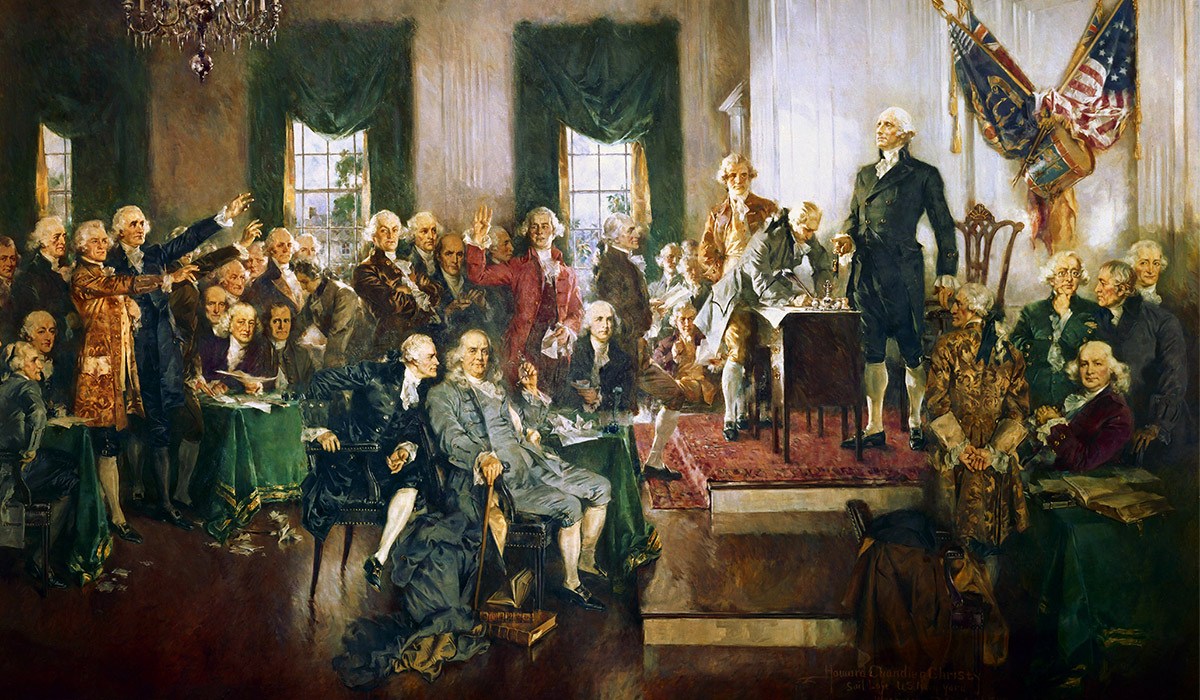By: Jay Cost – nationalreview.com – April 2, 2018
The Constitution Is Very Hard to Amend
And thank goodness.
In an op-ed for the New York Times, former Supreme Court justice John Paul Stevens called for radical change to the Constitution. Praising the recent March for Our Lives rally in favor of greater gun control, he said, “The demonstrators should seek more effective and more lasting reform. They should demand a repeal of the Second Amendment.”
Article V outlines the procedure by which amendments to the Constitution may be adopted. It is, to put it bluntly, a high bar to clear:
The Congress, whenever two thirds of both houses shall deem it necessary, shall propose amendments to this Constitution . . . which . . . shall be valid to all intents and purposes, as part of this Constitution, when ratified by the legislatures of three fourths of the several states, or by conventions in three fourths thereof.
You read that correctly: two-thirds of both chambers plus three-fourths of the state legislatures must approve an amendment before it becomes law. Repealing the Second Amendment is not going to happen any time soon.
Of course, everybody knows it won’t be repealed — there is no need to belabor the point. Instead, I think Stevens’s op-ed offers what our previous president might call a “teachable moment,” about the limits of majority rule in our system of government — and whether those limits are a good thing.
The Founders were republicans — believing that government was a public affair, and policy should reflect the public interest. By the standards of the age, they were radical republicans, having rejected the English model of republicanism, by which popular rule was balanced by hereditary estates.
Nevertheless, they were not democrats. Most of them doubted the capacity of the people to rule judiciously in all matters. They did not accept the notion of vox populi, vox Dei — the voice of the people is the voice of God. Our Constitution reflects this mixed sentiment — both the necessity and the danger of popular rule.
One of the ways it does so is by setting rather high vote thresholds for certain actions. If Congress wants to enact a law that the president thinks is a bad idea, it has to assemble a two-thirds majority in both chambers. If it wants to impeach the president or a federal judge, it requires a two-thirds majority in the Senate. The highest hurdle of all is an amendment.
The implication of this is that the government will take drastic steps only when a broad and durable majority believes it is necessary to do so. There will be no willy-nilly impeachments or amendments in our government. The people rule, but the more “ticklish” impulses of public opinion, as James Madison once put it, will be tamped down.
This is why the ratification of the Constitution was such an impressive feat. Between 1787 and 1790, the 13 states actually cleared this very high bar for popular action. It is not as though the Founders were hypocritical in slapping such a burdensome threshold on us. They had to face it themselves.
This means in turn that our system has a very high “status quo bias.” When the people cannot agree on a change, things remain as they are. This is the main reason the Constitution has so rarely been amended, and that many of the amendments were relatively minor procedural tweaks. There were only three moments of big changes: the Bill of Rights, adopted at the behest of the state ratifying conventions; the Civil War amendments; the Progressive Era amendments. All three instances were points of crisis in the body politic that created a sufficiently broad majority to make big changes.
The upside to this, as I noted, is that we do not really have tyrannical majorities ruling us, an oft-overlooked benefit of our system. The downside is that we get what might be called “dead-hand control.” Generations that can cobble together sufficiently large majorities to make massive changes to the government continue to exercise influence well beyond their lifetimes — as their innovations, having passed the supermajority requirements, then enjoy the protection of the status quo bias.
There is a genuine tradeoff here, which the gun-control debate inadvertently illustrates. The sentiment that informed the Second Amendment — that the people must be empowered to protect themselves — was uncontroversial in 1790. But that is no longer the case. If the Second Amendment were not part of the Constitution right now, it would probably not be adopted, except in a substantially scaled-back manner. Many people, myself included, continue to support the individual right to keep and bear arms, but the principle probably would not have enough popular support to get an amendment to the Constitution.
Similarly, I suspect that the United States Senate could never come into being if it did not already exist. The upper chamber of Congress was a necessary part of the compromise to hammer out the Constitution in 1787, but I doubt very much that mega states such as Texas, California, and Florida would acquiesce to it.
To see the rest of this article, click read more.
 Listen Online
Listen Online Watch Online
Watch Online Find a Station in Your Area
Find a Station in Your Area









 Listen Now
Listen Now Watch Online
Watch Online
